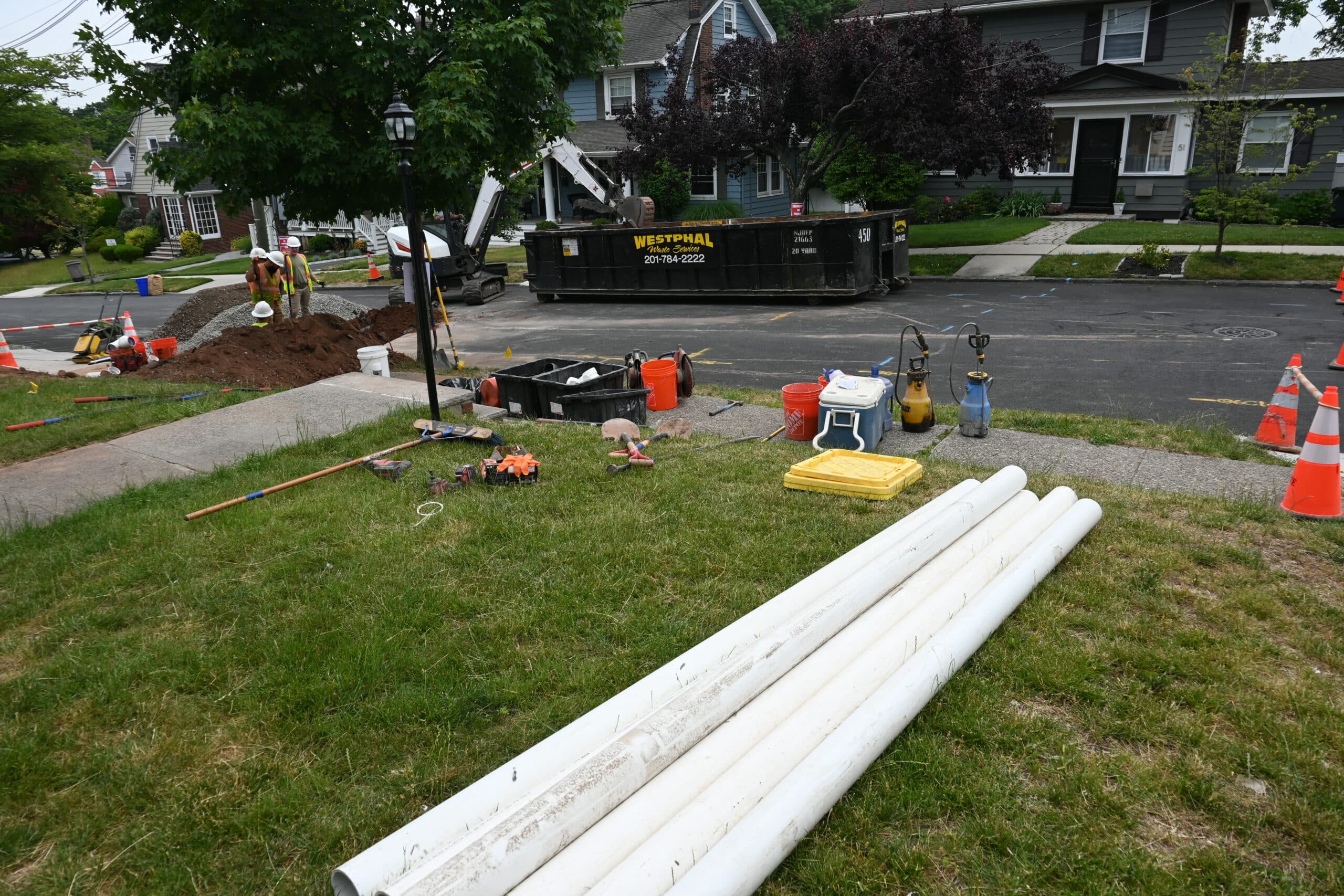The sewer line repair process can vary depending on the specific issue, the severity of the damage, and the chosen repair method. Here is a general overview of the steps involved in the sewer line repair process:
- Diagnosis and Inspection: The first step is to identify the problem and assess the condition of the sewer line. Plumbers may use sewer cameras or other inspection tools to visually inspect the inside of the pipe and pinpoint the location and nature of the issue..
- Preparation and Site Clearing: The affected area is prepared before starting the repair. If necessary, the work area is cleared of any obstacles, and safety measures are taken to protect nearby structures and utilities.
- Clog Removal (if applicable): If the issue is a simple clog, the plumber may use drain snakes, hydro-jetting, or other methods to clear the blockage and restore the flow of sewage.
- Pipe Patching or Lining (if applicable): For minor cracks or damage, the plumber may use pipe patching techniques or trenchless pipe lining to repair the affected area without the need for extensive excavation.
- Excavation (if necessary): In more severe cases of damage, excavation might be required to access the damaged section of the sewer line. Trenches are dug to expose the pipe fully.
- Pipe Replacement or Bursting (if necessary): If the sewer line is severely damaged and cannot be repaired, the damaged section may need to be replaced. Alternatively, pipe bursting might be used, where a new pipe is pulled through the old one, breaking it apart.
- New Pipe Installation: In cases where replacement is necessary, a new sewer pipe is installed in place of the old one. The new line is connected to the existing system, ensuring proper alignment and sealing.
- Joint Sealing: The connections and joints between the pipes are sealed securely to prevent leaks and ensure a smooth flow of sewage.
- Backfilling and Compaction: After the repair or replacement is completed, the trenches are backfilled with soil and compacted to restore the ground surface.
- Final Inspection and Testing: Once the repair is done, a final inspection is conducted to ensure that the sewer line is functioning correctly. Pressure and flow tests may be performed to verify the integrity of the repaired or replaced section.
- Site Cleanup and Restoration: Any debris or construction materials are cleared from the site, and the surrounding area is restored to its original condition. This may involve landscaping and pavement restoration.
It's important to note that not all sewer line repairs require extensive excavation. Trenchless methods, such as pipe lining or pipe bursting, can minimize disruption and reduce the overall repair time. The specific repair process will depend on the individual circumstances of the sewer line issue. If you need a sewer line repair call us at (201) 581-3740 or fill out our contact form.


